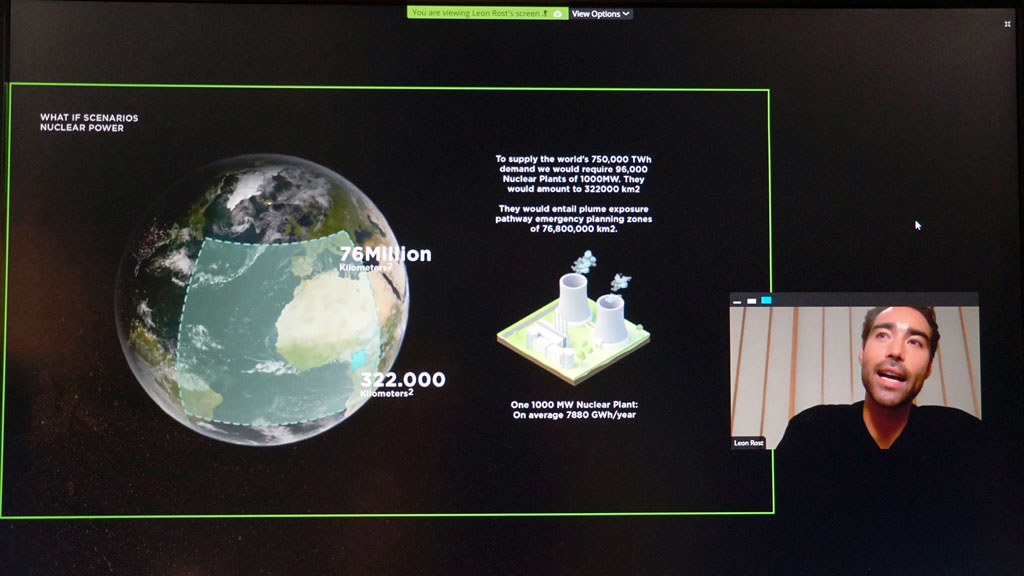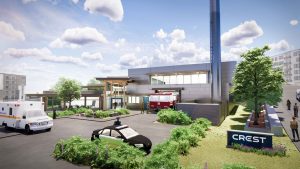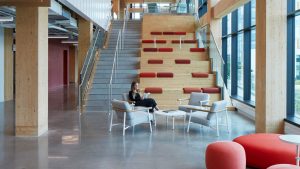Every month the world constructs the equivalent of all the building stock in New York City.
What might be more surprising is that there is enough logging around the world to fulfill that building order with mass timber.
So said Leon Rost, a keynote speaker at the Wood Solutions Conference, an annual wood design and building event put on recently by Wood WORKS! He pointed out that 80 per cent of the world’s logged forests end up as biofuel, primarily used in developing countries.
“In terms of long-term vision, if we can move energy to electric, if we can forest (harvest) sustainably, it is actually a feasible notion to build our future out of timber,” said Rost, who is a partner with BIG (Bjarke Ingels Group) Architecture, an international design firm with a number of high-profile global projects to its credit.
The architect said there isn’t enough timber harvested in the world to “soak up all the carbon in the atmosphere.”
To meet that end, the planet would need to add two times its land mass every year in forests.
To stop carbon emissions and capture carbon in the air, he suggested a solution starts with tackling the world’s energy bill – 153,000 terawatt hours, based on a population of 10 billion – shifting focus to renewable energy sources.
While there are not enough lakes and rivers around the world for hydro power to take the mantle, he pointed out nuclear power is also not the solution partly because the emergency exposure zones around nuclear sites require too much land area.
“Timber is definitely part of the solution, but we should think about how it works together with other solutions…how we can design these things in tandem and basically create a new vernacular architecture for a sustainable future.”
At BIG, Rost is the lead designer for the masterplan of Google offices in California and London, England, the latter in a dense inner city neighbourhood or Europe’s largest city.
Calling London Google “a true groundscraper,” he said the complex is about the same length as London’s tallest building – the 306-metre-tall Shard – but spread across a horizontal plane.
To create shading on the vast east-west facades of Google London, BIG employed vertical louvres made from mass timber. While they serve to cut heat gain, they are also mullions holding up triple-height glass panes.
“This is the largest timber mullion in the world that I know of,” he said.
He said while mass timber is not the primary structural system of Google London, the complex contains 7,000 cubic metres volume of timber.
That “amounts to almost 2,000 tonnes of carbon extracted from the air.”
Rost told his audience that the lumber for the London headquarters can be grown in only five hours from sustainably forested European sources.
“By creating a sustainable forest, you actually create more area for forest…adding to the (carbon) sequestering potential of trees in this world.”
While half of the world’s solid waste comes from the construction industry, he said smarter technology through robotics and software can help address the issue.
Robotics can also make inroads into prefabrication, resulting in sweeping changes to construction methods as well.
He pointed to the “Tatami module,” an age-old tradition of modular construction in Japan, as one that might be employed today, incorporating the latest technologies, such as modern fireproofing, to meet modern codes.
“The dream is to create modular robotically constructible timber architecture at great scale and great efficiency,” for uses ranging from offices to residential.
Rost said meeting sustainable objectives comes through the recognition of integrated solutions to city building where the vernacular “is not defined by esthetics” but in part by the building’s performance and its connectivity.











Recent Comments
comments for this post are closed